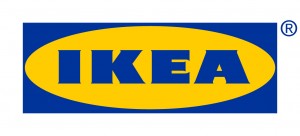Now that we are a couple weeks past the Twitter IPO, questions about whether or not Twitter can be profitable have been raised. After learning the business canvas model in comm 101, it quickly became apparent to me how important it is to have a clear value proposition and revenue stream. Twitter needs a clear value proposition to its investors, and actual revenue stream if it is to be a good investment. The IPO document never specified how Twitter intends to make money. Revenue streams are a fundamental part of any business model because without profits (which requires revenue), a company will go out of business. Twitter has built up an asset though: its large customer base. The obvious revenue stream for Twitter is selling advertisements. However, Twitter also has the ability to sell big data to marketers for large amounts of money. If Twitter were to partner with companies, and use keywords from tweets, it would have a clear value proposition to marketing agencies. As much as the general public dislikes their information being sold, they are not usually willing to do anything about it. Therefore, if Twitter can break down its data, and package it nicely, it can sell its business plan to investors.
Monthly Archives: November 2013
Is Facebook “Failing Its Marketers”?
Today I learned the importance of using many sources in a blog post. Wanting to write a post in reference to an external blog by Nate Elliot, VP of Forrestor Marketing. In his post, he suggests that Facebook is “failing its marketers”. I wrote 195 words and then came upon an article in Businessweek which took a more holistic approach to the issue.
This experience showed me the importance of searching out multiple perspectives before coming to conclusions. Now onto the topic at hand. Is Facebook a worthwhile place to advertise? Admittedly, Nate Elliot has a point that Facebook should leverage its data more to create more personalized ads based on what people “like”. However, they also need to be careful not to flood their website with advertisements as that would “alienate users”. What I realize now is that although Facebook may not be taking full advantage of its data, it is for many companies entirely worth it. As opposed to the marketing research we did in class, Facebook has the data (or the answers). If it can ask the right questions its advertising can become more effective. What Elliot does not realize is that this is a process that takes time.
Is It Too Hard to Learn From The Past?
Is ranking employees beneficial? This is the question posed by Carrie Zhou in relation to Yahoo’s decision to bell-curve its employees. Carrie rightfully pointed out the negative effects curving employees and managers. I believe that Yahoo should have learn from Microsoft. An important part of HR as we learned in class is performance management; how do employers reward high performance?
As this article about Microsoft points out, curving gives managers a quota of failing grade they must distribute. This is a cruel burden to put on managers who may not feel anyone deserves a failing grade. While well-intentioned, this ranking system misses the point. Yahoo should realize how harmful a standard ranking system has been for Microsoft. Carrie mentioned that workers tend to be unsatisfied in the ranking system. Stack ranking was described as “the most destructive process inside of Microsoft” by every employee interviewed. Ultimately, the problem stems from too much competition. The incentive to outperform everyone else to receive bonuses kills teamwork and cooperation. In turn, the creative engine of a company is hindered. Stack ranking is an HR nightmare. Admittedly, it does make bonuses easier to dish out. However, it would seem ironic to give out performance bonuses when overall performance decreases to an ill-designed bonus system.
Future (ad)Ventures
While reading through Corina Bizim’s blog on crowd-funding, I was immediately reminded of a TED talk I recently viewed. Corinna wrote about connecting consumers to producers through crowd-funding. Who better to decide which projects are developed than those who are using them. The idea is that anybody can pose an idea to the internet community . If people approve, they put their own money towards the project. This transparent model has successfully led to the invention of many innovative products.
The Internet provides a platform through which an entrepreneur can reach an audience. The publics role in product development is minimal. Their input allows for the creation of better products. The power of crowd-funding is in the relationship between the inventor and investor. Only ideas that inspire and resonate with the investor are funded. The Internet connects innovators to a larger audience than possible in the past. In the video, Amanda Palmer says that innovators need to “ask without shame”. The Internet is a place to ask for the resources necessary to translate an idea into reality. Gone are the days when entrepreneurs are at the mercy of venture capitalists. Rather, it is a story, idea, or adventure, communicated to the world via the Internet, that will become actualized. This is a new and better way of entrepreneurship.
Stop Bluffing and Go All-In
Let’s Go All-In on Selling Sustainability
“Measure what you care about and lead the change.” In this inspiring talk, Steve Howard addresses the idea of shared value. Shared value isn’t compromise but about going all in. IKEA does this by using sustainable cotton, moving to renewables such as solar and wind, and implementing a code of conduct that protects its workers around the world.
Interestingly, the talk is entitled “Let’s go all in”. If shared value and sustainability is so profitable, why aren’t all the chips on the table? The following blog explains Shared Value vs Don’t Be Evil
The first problem has to do with performance. Focusing on quarterly profits hinders a long-term perspective for management. Investing in renewables may take time to pay off. Secondly, (and I would argue the largest flaw with shared value) is that shared value relies on picking the “low-hanging fruit”. I agree wholeheartedly that there is shared value to be created. These opportunities should be pursued (as IKEA has by investing in a sustainable future). However, it is inevitable in more cases that profit, and social benefit or environmental well-being come into conflict. Belief to the contrary is naive. It is in these
cases that the application of shared value is unclear and very limited. That being said, there are extensive and untapped potential for shared value. Go all-in for that first. Then we can make the harder decisions about the harder decisions.






